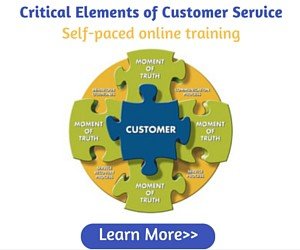
Increasing competition, declining sales and more service-aware customers are putting pressure on organizations to rethink and improve the levels of service that they offer.
Hence, many organizations are recognizing that by improving the service provided, they can make significant and sustainable gains in the marketplace. Service and service delivery can be, and increasingly are, a competitive weapon.
As highlighted in our previous write-up, “Understanding the service concept”, the effect of good service on creating valuable customers, increasing customer retention and loyalty and on attracting other customers, as well as on the financial position of an organization is important.
It can also be recalled from that write-up that the service concept is made of three components, two of which (relevant to this topic) are as follows:
The service experience – The customer’s direct experience of the service process, which concerns the way the organization deals with the customer.
The service outcome – The result for the customer of the service (in particular, the benefits provided, the resulting emotions and assessment of value for money).
For example, if a patient undergoes an eye operation he or she should be able to enjoy full vision. Enjoying full vision is an example of service outcome. How courteous the doctors and nurses were, the hospital environment, waiting time, etc, make up the service experience.
Some organizations compete on their service outcomes and others on the service experience, while some manage to compete on both.
As the diagram above suggests, there are a number of positions that the organization may take up when compared with the competition.
The five positions suggested (and shown on the diagram) are as follows:
Failing – Poor Experience, Poor Outcome: The organization’s outcomes are below industry expectations and service experience is poor. The telecoms industry in Nigeria has a good example – a government-owned telecoms national carrier that could not move with market trends after industry privatization. A typical example of an organization in failing quadrant, it offered poor outcome and poor experience and eventually failed.
Arrogant or complacent – Poor Experience, Excellent Outcome: Organizations who find themselves in this quadrant provide excellent service outcomes but treat customers poorly. Knowledge-based professional services sometimes fall into this category. Knowing more than their clients, they often display arrogance thereby denting customers’ experience. The medical profession often comes in for criticism in this area, dealing with patients not as human beings but rather as another condition to be treated.
Retaining customers in the short term – Excellent Experience, Poor Outcome: It is possible to provide excellent customer experience but give total service outcome that falls below standard. With this, the emotional switching costs for the customers are high but they will tolerate poor service outcome only for a relatively short time and eventually leave. Some technology companies have used this strategy to retain customers in the period between phasing out of an old product and launching of a new one.
Average: Average position is at the overall centre of the diagram. Some organizations are average. 
Organizations in this position include high-volume business-to-consumer services in sectors having many reasonably established competitors, all conducting business in a similar fashion. The Nigerian universal banking sector is a good example. There are up to twenty players but little to choose between them.
World class – Excellent Experience, Excellent Outcome: These organizations are universally recognized as being the best in all they do. There are few of these in existence.
Organizations will find that they are positioned at different points. Some may be world class, while others are failing. It’s important to be objective in assessing where your organization is positioned so as to adopt the best strategic approach for improvement.
The strategic focus to create a culture of continuous service improvement requires long-term commitment starting with building an organization-wide competency in service excellence.

